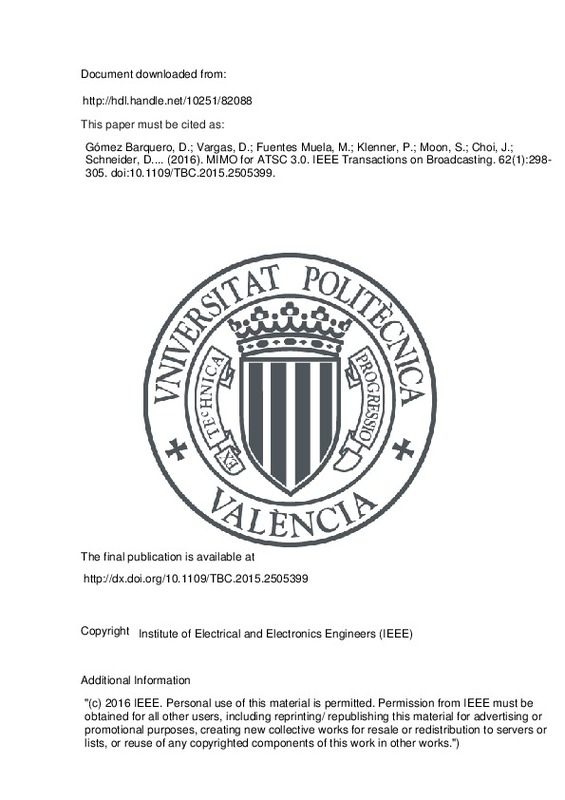JavaScript is disabled for your browser. Some features of this site may not work without it.
Buscar en RiuNet
Listar
Mi cuenta
Estadísticas
Ayuda RiuNet
Admin. UPV
MIMO for ATSC 3.0
Mostrar el registro completo del ítem
Gómez Barquero, D.; Vargas, D.; Fuentes Muela, M.; Klenner, P.; Moon, S.; Choi, J.; Schneider, D.... (2016). MIMO for ATSC 3.0. IEEE Transactions on Broadcasting. 62(1):298-305. doi:10.1109/TBC.2015.2505399
Por favor, use este identificador para citar o enlazar este ítem: http://hdl.handle.net/10251/82088
Ficheros en el ítem
Metadatos del ítem
| Título: | MIMO for ATSC 3.0 | |
| Autor: | Vargas, David Klenner, Peter Moon, Sangchul Choi, Jin-Yong Schneider, Daniel Murayama, Kenichi | |
| Entidad UPV: |
|
|
| Fecha difusión: |
|
|
| Resumen: |
This paper provides an overview of the optional MIMO (Multiple-Input Multiple-Output) antenna scheme adopted in ATSC 3.0 to improve robustness or increase capacity via additional spatial diversity and multiplexing by sending ...[+]
|
|
| Palabras clave: |
|
|
| Derechos de uso: | Reserva de todos los derechos | |
| Fuente: |
|
|
| DOI: |
|
|
| Editorial: |
|
|
| Versión del editor: | http://dx.doi.org/10.1109/TBC.2015.2505399 | |
| Descripción: |
|
|
| Tipo: |
|







![[Cerrado]](/themes/UPV/images/candado.png)


